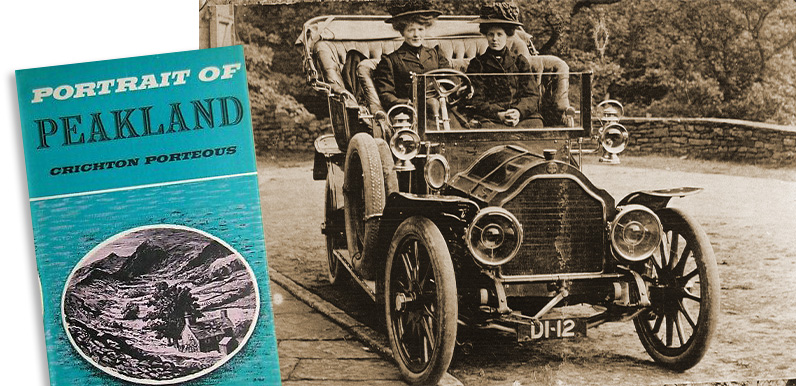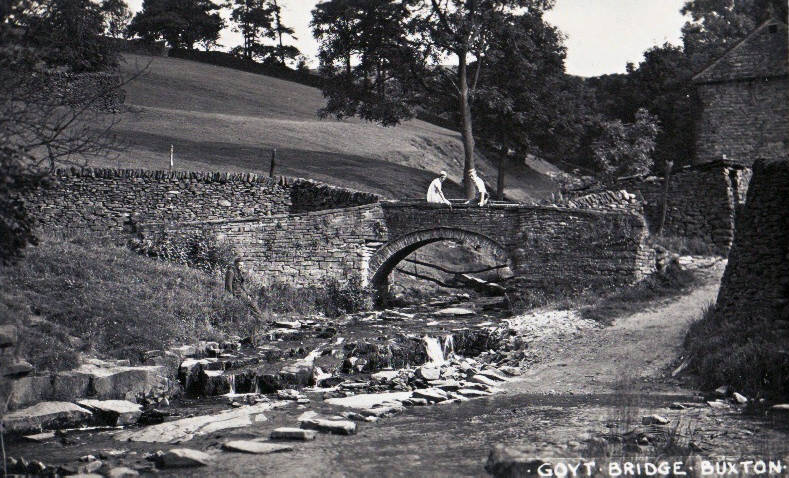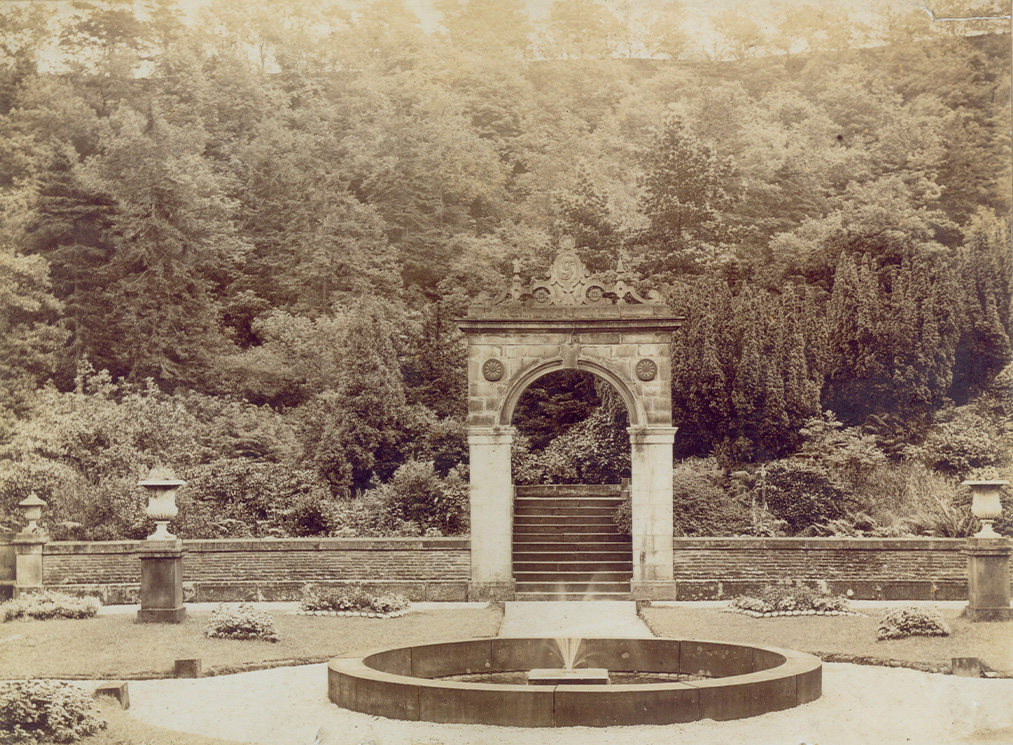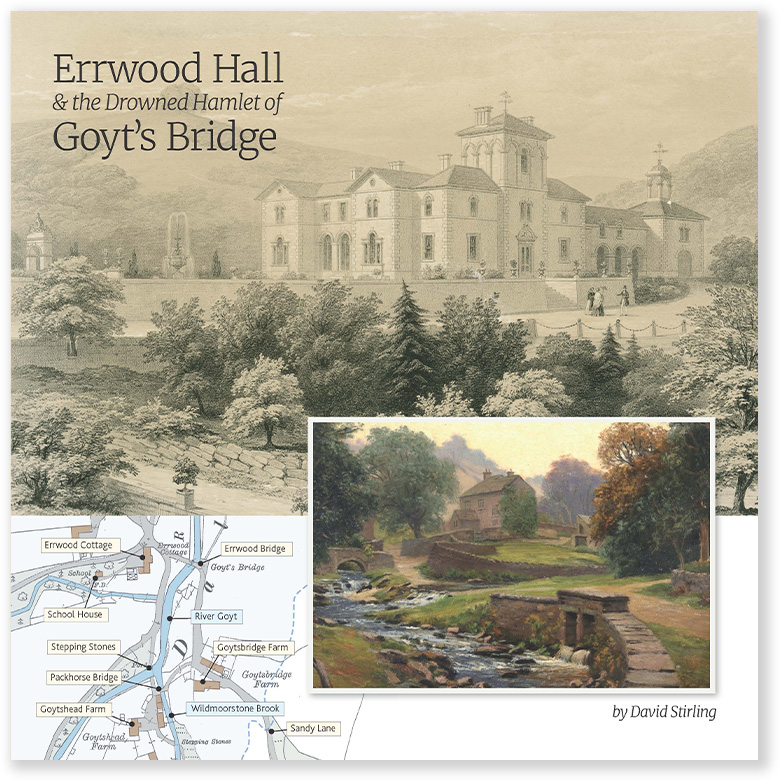Above: Published in 1963, ‘Portrait of Peakland’ was one of many books written by Crichton Porteous on Derbyshire and the Peak District.
This extract includes a ghostly apparition seen by two Errwood Hall maids in 1914. I wonder whether either of the two ladies at top right may be the ones mentioned.
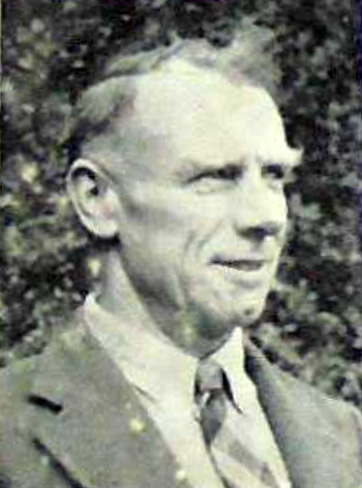
Above: Known as ‘the Thomas Hardy of Derbyshire’, Crichton (1901-1991) wrote that “there is more variety and beauty in Derbyshire than in any other county”. View his Wikipedia page.
I first came across the name Crichton Porteous in Clifford Rathbone’s ‘Goyt Valley Story‘, in which he recounts the tale of Tunstead Dickie’s skull (click to read), which he’d heard from Crichton. This description of a visit to the valley – before the construction of Errwood Reservoir – includes a ghostly tale of an apparition witnessed by two Errwood Hall maids. (The text is Crichton’s but the photo captions are mine.)
Along the Goyt
The Goyt Valley is for half its length free to walkers only. From close by the Cat and Fiddle Inn above Buxton a narrow road starts down into the valley, and can be used at present by motorists to Goyt Bridge.
The conditions, however, prevent speeding and the walker can feel safe; but for those who wish to keep away from all traffic, there is the path starting 100 yards on the Macclesfield side of the Cat and Fiddle which goes along Stake Edge top and leads down the grass moor to just above Goyt Bridge. That there was once a farmhouse and several pleasant cottages here it is now impossible to guess.
Packhorse bridge vandalised
The bridge from which the hamlet got its name was the packhorse one, which it had been hoped might have been removed carefully, each stone numbered, and rebuilt above the upper Goyt reservoir which Stockport Corporation is shortly to start, but vandals have recently wrecked the bridge, and even the stepping stones have been displaced and rendered useless.
When it is recalled that the Goyt ford and the bridge over the little tributary were used when salt had to be carried in horse-panniers from Cheshire into Yorkshire, such vandalism seems senseless and unforgivable.
The short walk from Goyt Bridge to where Errwood Hall stood can be a beautiful experience still if the azaleas and rhododendrons are in bloom; or at other times a melancholy pilgrimage if one remembers the double-fronted hall intact and occupied.
The Errwood ghost
After reading the Recollections in Peakland, a woman wrote:
“Did you never hear of the Errwood ghost? I am not surprised, though, as it was never mentioned in my time, although I was privileged to see the apparition. Also another maid saw it immediately after me. We had a mass said, after telling the resident priest, so I hope the ghost was laid, but I cannot forget that wonderful apparition.”
With the letter came a photograph, taken from the Hall, showing the front garden with a round pond with raised stone surround, and a fountain playing, and beyond that the twelve broad stone steps down to the big, arched entrance gate. Just to the right of the arch, against a background of trees at a higher level, was an inked cross.
On the back of the photograph were the words:
“I have marked the place where the ghost appeared on November 15, 1914. I saw it from the window of the house. The apparition was a brilliant figure in the blackness of the night, beckoning with its long arms to me, and, pointing up the path, it ran with its hollow eyes holding me spell-bound.”
Above: I think this must be the photo mentioned by the maid. She said she saw the ghost above right of the steps. They lead up to the Grimshawe family’s graveyard.
From Goyt Bridge motorists must either venture up to the Long Hill Road, or run into Cheshire past Jenkins Chapel. Walkers continue along the river, which broadens into Fernilee Reservoir. There is a ‘sea-view’ down its full length off the neat suspension bridge.
Before the reservoir workings were begun all the wild plants in the area to be submerged were carefully listed by volunteers, and then experts went secretly and lifted the rarest plants and replanted them in other suitable situations. It is to be hoped something similar will be done before the new reservoir is begun.
Near the suspension bridge can be seen one of the inclines of the Cromford and High Peak Railway. The line started from the canal at Whaley Bridge, and had already made a considerable climb before it reached here. Below the reservoir and pump-house (decently hidden), the River Goyt is seen back in its natural course.
